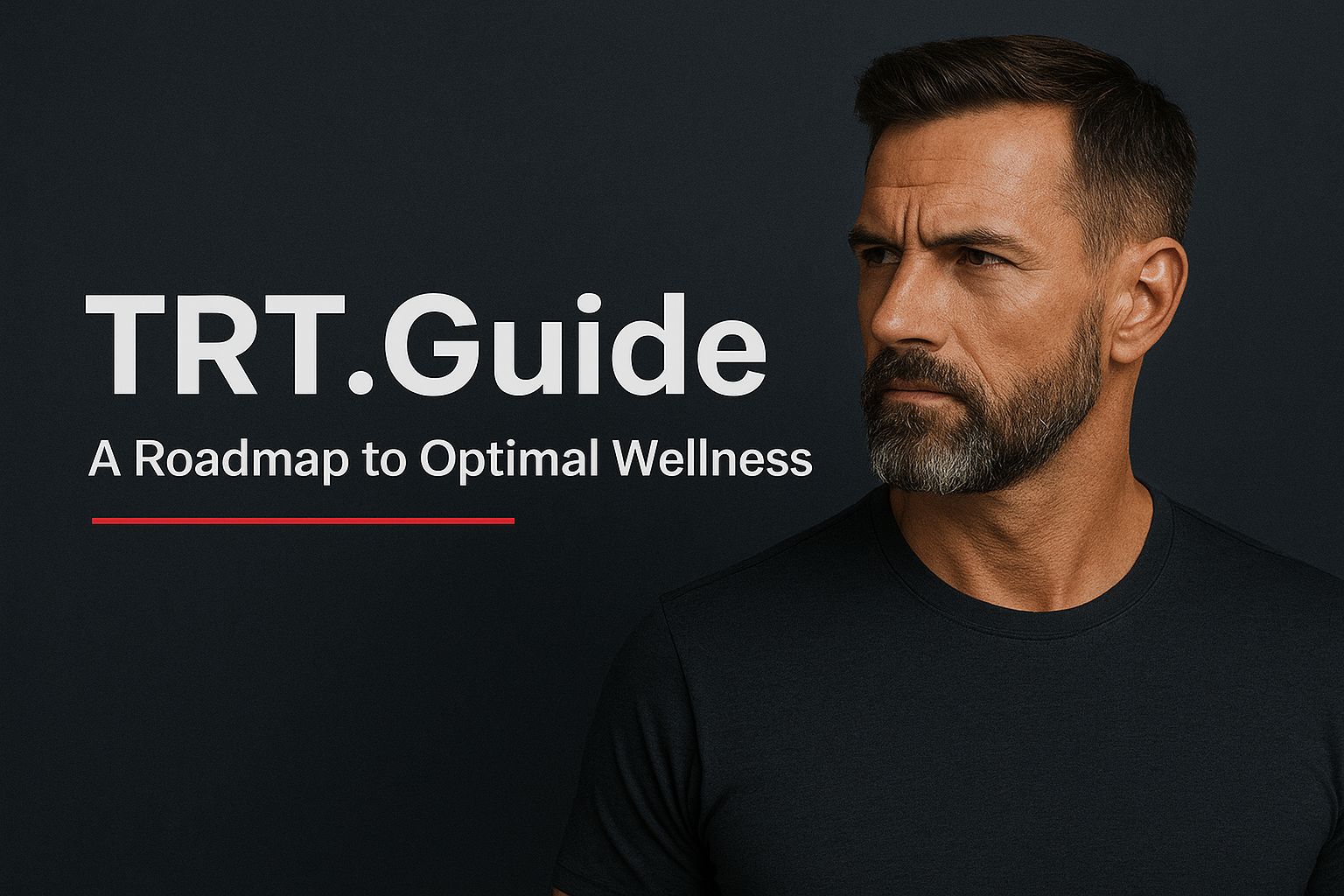For those who are inclined towards using the testosterone therapy, the issue of financial constraints might top their list of concerns. It is important to verify if your insurance policy includes such a treatment because of the huge impact it may have on your final decision.
A lot of people these days become much more aware of their hormone health and the majority of those who are in the low testosterone situation are looking for options that can help but they are not sure of the costs associated with the treatment.
Health insurance is tough to understand especially when a person is new to it and has to deal with more local issues like hormone replacement; it is very difficult for them. Insurance companies have different coverage, and you can never know which one you are going to fall under. It is very important for you to be aware of the options that are at your disposal and as a result, you will not encounter any surprises. Let’s have an in-depth look into the health insurance coverage details for testosterone therapy and you can get to know more about it and eventually, you can select a treatment that will make a difference in your life.
Introduction to Testosterone Therapy
Testosterone therapy is the use of testosterone to cure low testosterone levels, also called hypogonadism. The idea behind the Testosterone replacement therapy is to bring the regular level of the hormone back to the body and thus promote the health and wellness of the person and also solve the physical, emotional, and mental complaints of the body.
The symptoms that testosterone therapy can improve could be very serious and varied, as per some examples: feeling weak, not having the energy and sex drive they used to have, experiencing the problem of muscle mass reduction, and the irregularity of mood.
Categories of Testosterone Therapy
- Injections: Intramuscular injections are made every month to every 3 months, and testosterone is taken directly into the blood. The most commonly used testosterone injection types are testosterone cypionate and testosterone enanthate.
- Patches: After applying the skin, the transdermal patches release the testosterone gradually. The usual replacements need to be made daily.
- Gels: Generally, the most common way of delivering testosterone is through topical gels. Simple and easy to manage, they are put on clean and dry skin, hence, no shower time and no free weekend are necessary and also can lead to the skin absorbing testosterone transdermally.
- Pellets: Tiny cylinder implants are placed under the skin to slowly allocate testosterone over the course of a few months. It is the method that is often used when a stable hormonal level is needed and dosing frequently is not an option.
- Oral Tablets: Although less popular because they have higher chances of causing liver issues, oral tablets are available for testosterone delivery, but they require follow-up inspection and very careful handling.
Determining Need for Therapy
During the decision-making process of testosterone therapy necessity, healthcare professionals typically take several blood tests to determine patients’ testosterone levels. Symptoms, age, and the overall physical condition of an individual are also part of the evaluation.
As stated by the Mayo Clinic, a testosterone level below 300 ng/dL is a sign of testosterone deficiency. Yet, the symptoms and other circumstances play a crucial role in treatment decisions.
Potential Benefits
Aside from so much more, testosterone treatment is known to generate an array of benefits, such as:
- Boosted Energy Levels: Aids in both physical and mental vigor count.
- Gained Muscle Mass: These may be buddies in your quest to build up your muscles and become more refined in your sports.
- Increased\’ Sexual Desire: The desire for sexual touch is awakened and erections are sought out and sustained.
- Feelings of Joy: It is able to eliminate the signs of grief and nervousness you may experience.
Risks and Side Effects
Though the treatment with testosterone can be quite useful, it is associated with many adverse effects as well. The potential side effects are:
- Swelling: May occur due to the accumulation of fluid. Also, the blood pressure may increase.
- Worsening of Sleep Apnea: May not only worsen but may also trigger symptoms if one is prone to sleep apnea.
- Hematocrit Increase: Raises of this kind lead to having blood clots and heart issues.
- Unstable Hormonal Levels: This can lead to fluctuations in the mood, being more aggressive, and the feeling of sexual desire being reduced.
Throughout your interaction with your medical professional, you will be able to acquire all necessary information including the risks and benefits. Another thing, which is finding a health insurance coverage suitable for this therapy, can be of great help in making your decision about the hormone issue a well-informed one.
Understanding Health Insurance
Health insurance is an element that most influences whether or not you can afford the costs of TRT. Understanding the various health insurance plans available, their regulations, and the exclusions concerning their coverage is a perfect guide to reach a decision effectively.
Types of Health Insurance Plans
- Employer-Sponsored: A given employer provides a variety of healthcare plans that may include the coverage of testosterone therapy. What the policy actually covers is usually determined by the policy details.
- Individual Health Plans: Plans can be purchased directly from the insurer. The type of coverage, deductibles, and premiums all vary.
- Medicare: Specific Medicare parts are another option that may pay for testosterone therapy due to a particular diagnosis. Every client has to meet the eligibility requirements.
- Medicaid: States: Featured and access to treatment through insurance can significantly, if not, considerably, differ from one state to another under the Medicaid program. Often, each state develops its own rules to determine the types of coverage of a new treatment plan.
- Short-Term Health Insurance: In addition, insurance of this kind is often just presented for a limited period and may not include testosterone therapy. Carefully reading the small print is therefore very important.
Common Coverage Exclusions
- Cosmetic Treatments: Almost always the treatment part of the insurance deal does not cover the treatment regarded as a cosmetic one. It’s important to remember that approval may not be granted if the medical intervention is viewed as suitable for better looks rather than health. So, in such cases, the coverage can be voided.
- Non-Diagnosed Conditions: Low testosterone symptoms can be the reason for many other health-related issues but be unobvious for diagnosis that will result in insurance claims being denied.
- Experimental Treatments: It is important to get information about the treatment being used that it is not one of the therapy defined as experimental or investigational, as medical insurance providers may refuse to pay for such services. Thus, before the therapy decision evaluation is sought, we advise you to verify that it is, in fact, the most current one.
- Age Restrictions: To bring another level of restriction to the table, certain plans can limit treatment with testosterone to certain age groups only. Thence, do check the age bar set by your agency.
- Pre-Existing Conditions: It is possible that the coverage given for a pre-existing condition will have certain conditions or it might not be granted at all. You need to get in touch with your insurance company and get the updated terms, conditions, and exemptions for such matters.
Not only can you be well informed of the financial burden and the type of insurance plan whether it’s worth it to start testosterone therapy but you will also be aware of the contraindications of the above.
Health Insurance and Testosterone Therapy
Getting medical insurance coverage for testosterone therapy is greatly benefited if you are clear about the particular conditions and types of plans that can be covered. Awareness of these variables could be the key to effectively controlling costs and at the same time being on the way to recovery through therapy.
Coverage Criteria
Health insurance to raise testosterone often involves directly related criteria. The treatment usually requires, to start with a confirmatory hypogonadism diagnosis like a report of below 300ng/dL in a blood sample drawn for testosterone levels, and then writing of symptoms experienced by a patient by the physician. Also, they may be in the form of prior authorization by the patient’s insurance company, for whom the treatment is medically necessary.
Regarding the treatment, the terms of the policy, for example, can be expressed in ways that help in determining which are the only types of treatments that will be paid. A typical example is that some insurances cover only injections but do not include patches or gels. Also, you may be denied therapy in case your health insurance policy contains anything on pre-existing conditions which means that the disease may not be funded if it already existed. Your understanding of these criteria is a must to be efficient in the process of your insurance policy decision-making and find out what are potential points for coverage.
Types of Plans That May Cover Therapy
Different insurance plans could have, in their contract details, the coverage of therapy for testosterone, but with different features. Frequently, employer-sponsored insurance is seen as an opportunity to have insurance with generous benefits, such as providing all necessary and reasonable treatment after the whole deductible is met. In the case of individual health plans, the most common situation is that there is a spectrum of benefits and the policyholder needs to read about the exact hormone treatment details in the document.
If a person is eligible for a certain level of low testosterone, Medicare probably will provide coverage for testosterone therapy. The basic principle of Medicaid is to provide coverage, subject to variations in regulations, such as those between states. Short-term health insurance plans are uncertain whether the coverage of testosterone therapy will be comprehensive as they generally limit benefits to urgent care. It is, therefore, essential to understand the specific regulations and exclusions of each plan as it will be necessary in knowing your expenses that therapy may bring.
Factors Affecting Coverage Decisions
There are a variety of aspects that can determine the coverage of health insurance for testosterone use. You need to have an understanding of these factors so that you can gain the maximum benefit from your health insurance.
Medical Necessity
Insurance companies often require a defined diagnosis of hypogonadism to approve the use of testosterone. Apresence of less than 300 ng/dL level of testosterone in the body, confirmed by a blood test, will serve as evidence of the prevalence of hypogonadism.
A doctor should be able to describe the most usual hypogonadism symptoms (fatigue, mood swings, low libido). The medical necessity of treatment for patients is determined by the insurer who follows the standardized clinical guidelines and practice protocols. Approval might not be given even if the diagnosis is not complete or the treatment needs are not sufficiently valid.
Insurance companies can also require periodic reviews if they want to be informed of patients’ progress or get an update about any changed conditions. Following these protocols to the satisfaction of the insurer establishes the appropriateness of the therapy and subsequently the qualification for coverage.
Provider Involvement
The role of your healthcare provider as an intermediary in getting insurance coverage for the testosterone therapy is very crucial. Doing the paperwork, which includes the completion of prior authorization forms, is the duty that providers undertake to show that the remedy is medically necessary for the patient’s condition.
Providers are usually asked by the insurers to confirm that they prescribed other medications before communicating with them or they simply declare the use of alternative treatment. A sharing connection, between you and your provider, increases the possibility of getting an approval. Besides, some plans could need you to make periodical appointments for follow-up and to monitor your progress.
Being in a continuous touch with your healthcare provider is a way to abide by the insurance policy’s requirement for continuous therapeutic coverage.
Steps to Determine Coverage
Fully understanding medical insurance coverage for testosterone therapy is accomplished through a structured sequence. Understanding the intricacies of your policy and engaging with your insurance provider raise your odds of getting the coverage you want.
Reviewing Your Policy
Go through your health insurance policy with the view to finding out more about the coverage particularly for testosterone therapy. Key terms are useful in the search such as hormonal therapies, drugs, and treatment authorizations. The chapters that contain terms like “testosterone therapy,” “hypogonadism,” and “hormone replacement therapy” are most likely to be the ones to wear this information out. You should also abide by the coverage limits which may relate to certain eligibility requirements e.g. the lower or upper age limits etc.
Consider your deductible, copayment, and coinsurance amounts, as those will determine your out-of-pocket costs. Ask if the insurer is asking you to get permission before you begin your treatment. In most cases, you are required to comply with this condition to ensure the taking of medications is in line with the disease.
Beyond that, observe any uniquenesses your plan might carry regarding exceptions, e.g. restrictions on generic versus brand-name medications. By being familiar with these matters, you can predict costs that may arise and be better equipped to have a conversation with your healthcare provider.
Contacting Your Insurance Provider
Get in touch with your insurance provider to get details of your testosterone therapy coverage. That can be made possible through whichever of these methods: making sure your policy number, the type of testosterone therapy you are in search of, and medical records are all prepared. You can also confirm from them, besides their existence, as to whether a prior authorization is required, if they have preferred providers, or if any additional documents are needed. Whether the insurance will cover all the cost, or is there a follow-up, for example, a prior diagnosis or tests required, should be one of the queries in your list of questions.
Open and effective communication is essential; state clearly your need for testosterone therapy and share your medical history to start and guide the conversation. It is good for you to make notes of the conversation for future specific information. If there is any unclear point in the coverages, you should definitely ask for further clarification. Being well-informed about your policy and having a transparent exchange of ideas make it easier for you to be able to get the necessary insurance cover for your treatment.
Conclusion
Finding your way through the health insurance system for testosterone therapy can definitely be a challenge, given the complexity of the issue. Hence, a very essential point is to know your plan well in order to get the most accurate advice about your hormonal health and be able to make a knowledgeable decision.
Knowledge of covered items and required documentation can boost your odds of approval for the therapy. It may be helpful to view the “Receiving Approval for Therapy” section of the specific agreement where a list of procedures that, after completion, will grant you the right to your request is included.
Engage in ongoing dialogue with your physician to ensure all requirements are fulfilled. This not only assists you in getting the green light but also benefits you on your tout l journey to recovery.
Frequent Ask Questions
What is testosterone therapy?
Testosterone therapy is a medical treatment that provides patients with testosterone. The therapy addresses patients who have been diagnosed with low testosterone, or a condition called hypogonadism. The main goals of this treatment are to improve one’s mental, psychological, and physical health by giving relief from such symptoms as lack of energy, decreased muscle mass, low sexual desire, and emotional depression.
How is the need for testosterone therapy determined?
Health care professionals make a judgment in this area after conducting tests to measure the level of testosterone in the blood, besides taking into account the signs of the patient, age, and general health. Usually, a level of testosterone that is below the standard value of 300 ng/dL is an indicator that the therapy is advisable.
Does health insurance cover testosterone therapy?
The scope of health insurance support for testosterone therapy is significant and varies depending on the plan at hand. While most employer-sponsored plans provide a wide range of choices, Medicare and Medicaid has a group of people who are eligible with specific criteria and, apart from this, there is a need to check the exclusions. Specific attention should be paid to the annual policy outline.
Which exclusion categories normally are taken into account by health insurance in the case of testosterone therapy?
The common parts of exclusions are holidays, the case which is not diagnosed non treatment, experiment, age problem, and old existing conditions. Of course, these are just examples and it is inevitable that each particular policy is different, for this reason, always refer to the insurance policy you are committed to regarding any information about the treatment.
Is a prior authorization for testosterone therapy necessary?
Highly likely, the approval of the health insurance plan by the patient is indispensible for the use of testosterone therapy. This process of verification usually entails getting consent from a doctor of hypogonadism, receiving blood tests, and giving symptoms.
How can I assure my insurance will pay for the testosterone therapy?
If you want to ensure coverage, adhere to good communication with your doctors, who will faithfully record your case. Adoption of an insurance policy must be thorough in order to cover details of satiation, deductibles, copayments, and any extra requirements.
What testosterone therapy methods can be found?
Even the types of testosterone therapy have a choice, which ranges from injections, patches, gels, pellets, to oral tablets. The method of each has a distinguishable feature, a delivery system, and the necessary frequency of use; in such a way, a healthcare specialist can correctly and precisely prescribe treatment as per one’s circumstances.






